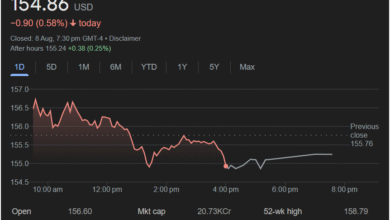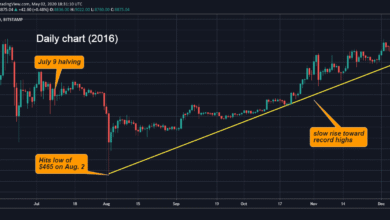Paper Bitcoin: Legendary Bitcoiner Debunks Fake Claims

Paper Bitcoin is becoming a hot topic among cryptocurrency enthusiasts, especially as discussions about its legitimacy heat up in the Bitcoin community. Recently, Adam Back, a well-known figure in the crypto space, rejected the claims surrounding the existence of this synthetic bitcoin, arguing that large institutions are indeed taking delivery of their purchases through trusted custodians. This debate has sparked a broader conversation in the Bitcoin market about the potential presence of fake bitcoin, with some suggesting it could be influencing Bitcoin price stability. With billions allegedly floating in the market, the implications of paper bitcoin are significant for investors and regulators alike. As conversations continue, it’s crucial for participants in the Bitcoin market discussion to understand the nuances that define this phenomenon and its impact on the overall landscape.
The concept of paper bitcoin refers to the notion that there may be versions of Bitcoin that exist off-chain, diverging from the recognized 21 million BTC cap. Often couched in terms like synthetic bitcoin, this discussion raises questions about the integrity of the market, especially when significant amounts of so-called fake bitcoin are allegedly linked to price stability. This ongoing debate has captured the attention of numerous crypto analysts and investors, prompting them to explore how these alternative bitcoin tokens could reshape price dynamics and investor behavior. With prominent figures in the crypto community expressing divergent opinions about the existence of these instruments, many are left to ponder the real effects on Bitcoin custodians and future market performance. As the discourse evolves, the implications for market transparency and integrity remain a pivotal concern for all stakeholders.
Understanding the Concept of Paper Bitcoin
Paper Bitcoin refers to the idea of synthetic bitcoins existing beyond the 21 million on-chain limit established by Satoshi Nakamoto. This concept implies that there are more bitcoins in circulation than what is theoretically available, leading to concerns about fake bitcoin affecting market dynamics. Proponents argue that paper bitcoin could explain the observed price stability in the face of increased institutional demand; as institutions continue to buy large quantities of BTC, the supply’s perceived scarcity is challenged by the alleged existence of additional, non-existent or synthetic BTC.
The discourse surrounding paper bitcoin raises significant questions about market integrity and the mechanisms of bitcoin trading. As institutions opt to store their acquired bitcoins with custodians, they may inadvertently contribute to the liquidity of synthetic bitcoin without realizing it. This scenario suggests a complex interaction between actual bitcoin and the alleged billions of fake BTC circulating in the market, creating an opaque environment for new investors and market participants.
Adam Back’s Rejection of Paper Bitcoin Claims
Adam Back, a prominent figure in the cryptocurrency space, has publicly dismissed the concept of paper bitcoin, labeling it as a myth. Back argues that the claims surrounding billions of fake BTC are implausible and emphasizes that institutions purchasing large amounts of bitcoin are indeed taking physical delivery through reliable custodians. His stance reflects confidence in the transparency and verifiability of on-chain transactions, which he believes are crucial in maintaining the integrity of the bitcoin ecosystem.
Despite Back’s arguments, dissenting voices like Lawrence Lepard contend that paper bitcoin indeed influences the market. Lepard mentions the large amounts of perpetual futures contracts outstanding on platforms like Binance, suggesting that these derivatives could indicate the presence of synthetic bitcoin. His comments contribute to a growing debate about whether these financial products are creating a shadow market that could impact overall Bitcoin price stability.
The Role of Bitcoin Custodians in the Market
Bitcoin custodians play an essential role in the cryptocurrency landscape, particularly for institutional investors who wish to ensure the security of their assets. Custodians provide safe storage solutions and help facilitate transactions, thereby allowing institutions to manage their bitcoin assets more effectively. With the rising demand for Bitcoin from institutional players, custodians have become increasingly vital in the acquisition process, ensuring that large volumes of BTC are securely held and reducing the risk of market disruptions.
However, the involvement of custodians also raises concerns regarding transparency and potential market manipulation. Critics argue that as more bitcoin is deposited with custodians, the risk of synthetic bitcoin circulating in the market increases. This situation highlights the need for regulatory clarity and better practices among custodians to minimize the risk of counterfeit assets affecting Bitcoin’s reputation and stability.
Market Reactions to Allegations of Fake Bitcoin
The recent debate over the existence of paper bitcoin has sparked significant reactions within the Bitcoin community. Many enthusiasts expressed skepticism towards claims of synthetic bitcoin, siding with Adam Back’s assertions that the integrity of on-chain transactions remains intact. This fervent defense of Bitcoin’s underlying principles highlights a strong community commitment to eliminating misinformation that could potentially undermine its value and trust.
Conversely, the market reactions to these allegations have been mixed, reflecting a divided opinion among investors. Some traders are concerned that the existence of fake bitcoin could lead to decreased confidence in the asset’s value, prompting a sell-off to mitigate potential losses. Others maintain optimism, driven by the influx of institutional capital, suggesting that the long-term price trajectory remains bullish despite the ongoing debates.
Bitcoin Price Stability: A Concern for Investors
Bitcoin price stability has emerged as a pressing concern for investors, especially in light of claims regarding paper bitcoin. As institutional demand for Bitcoin continues to rise, the expectation is that prices will reflect this demand positively. However, the perceived presence of fake bitcoin could create a disconnect between the actual supply and demand, leading to fluctuations that worry potential investors. Many are questioning how the market can sustain its upward trajectory if synthetic assets are influencing price movements.
Furthermore, recent discussions have highlighted the impact of market speculation and derivatives trading on Bitcoin’s price dynamics. The growing number of perpetual futures contracts signals a shift in how Bitcoin is traded, with the risk of price manipulations due to these synthetic products. This reality makes it crucial for investors to consider the broader market context when evaluating Bitcoin price trends and making investment decisions.
Debunking the Myth of Fake Bitcoins
As the conversation surrounding paper bitcoin evolves, it becomes increasingly important to dissect the claims and counterclaims within the market. Debunking the myth of fake bitcoins involves rigorous scrutiny of trading practices and financial instruments used in the crypto space. Industry experts like Adam Back urge stakeholders to focus on verifiable data and sound economic principles when evaluating bitcoin’s real supply versus the synthetic figures being discussed.
Nevertheless, the impact of media narratives and social discourse cannot be overlooked. Frequent mention of fake bitcoins can create a sense of urgency and fear among investors, potentially leading to irrational market behavior. Hence, it’s critical for both veteran investors and newcomers to approach the topic of paper bitcoin with a balanced perspective, weighing potential risks against the benefits of participating in the evolving cryptocurrency landscape.
The Surge of Paper Bitcoin Conspiracy Allegations
Recently, conspiracy allegations surrounding the existence of paper bitcoin have surged across social media platforms and crypto forums. The buzz generated by discussions on synthetic bitcoin and its implications for Bitcoin’s legitimacy has captured the attention of many within the community. These conversations often revolve around the perceived discrepancies in Bitcoin prices, suggesting that the current bullish rally could be artificially sustained by the inflation of non-existent coins.
The intensity of these allegations signals a critical moment for the bitcoin community, as many investors are seeking clarity amidst conflicting information. The challenge lies in differentiating between legitimate concerns regarding market integrity and sensationalized claims that may serve to incite fear. Establishing a sound understanding of these dynamics will be essential for navigating the complex landscape of cryptocurrency investments.
The Future of Bitcoin Amid Paper Bitcoin Claims
Looking ahead, the future of Bitcoin in light of paper bitcoin claims presents both challenges and opportunities for growth. As the market matures, transparency and education will be paramount in addressing investor concerns regarding the legitimacy of bitcoin production. Initiatives from industry leaders aimed at increasing awareness about the implications of synthetic bitcoins could help mitigate fears and reinforce confidence in Bitcoin’s long-term viability.
Moreover, the potential for regulatory developments surrounding custodial services and derivatives trading may shape Bitcoin’s future market landscape. As authorities strive to create a robust framework, investors will be closely watching how these regulations affect trading practices and asset security. Ultimately, the ongoing dialogue around paper bitcoin will be instrumental in guiding Bitcoin’s trajectory as a leading digital asset in the years to come.
Navigating Bitcoin Market Discussions
The ongoing discussions regarding paper bitcoin and its ramifications highlight the need for thoughtful navigation within the cryptocurrency market. Investors are encouraged to engage in informed dialogue that considers various perspectives, particularly in light of sentiments expressed by industry veterans like Adam Back. The podcasting and on-chain analysis community plays a crucial role in disseminating information that can help clarify the real threats posed by synthetic assets.
As Bitcoin continues to attract attention from institutional investors and the mainstream media, fostering an educated public discourse becomes essential in establishing the foundation for broad adoption. Analyzing sentiments, dissecting claims of paper bitcoin, and evaluating market trends are key elements that investors should focus on to make informed decisions in this dynamic environment.
Frequently Asked Questions
What is paper bitcoin and why is it considered fake?
Paper bitcoin refers to synthetic bitcoin that exists outside the official on-chain limit of 21 million BTC. It is considered fake by some because it represents derivatives or claims on Bitcoin rather than actual ownership of the cryptocurrency.
How does paper bitcoin affect Bitcoin price stability?
Some analysts suggest that paper bitcoin contributes to Bitcoin price stability by providing liquidity and derivatives that can absorb market demand without impacting the actual supply. This could explain why Bitcoin prices haven’t surged despite increasing institutional purchasing.
Are Bitcoin custodians involved with paper bitcoin?
Yes, Bitcoin custodians play a significant role in the storage and management of actual Bitcoin. The discussion surrounding paper bitcoin includes the notion that large institutions hold real Bitcoin with custodians while trading synthetic instruments that do not reflect true Bitcoin ownership.
What are the implications of fake bitcoin on the Bitcoin market?
Fake bitcoin, or synthetic bitcoin, raises concerns about market transparency and the true supply of Bitcoin available. It may lead to misleading perceptions of market demand and price movements if a significant amount of paper bitcoin is trading.
Why is there a debate among Bitcoiners regarding paper bitcoin?
The debate arises from conflicting views on the existence and impact of paper bitcoin in the market. Some respected figures argue that it is a real issue affecting price stability, while others vehemently deny its existence, insisting that all purchases lead to actual Bitcoin holdings.
What evidence is there for the existence of paper bitcoin?
Proponents of the paper bitcoin theory cite figures from exchanges like Binance, where significant volumes of perpetual futures contracts are reported, suggesting that there is substantial trading of synthetic instruments tied to Bitcoin.
Can synthetic bitcoin influence the future of Bitcoin market discussions?
Absolutely, the presence of synthetic bitcoin could influence future market discussions as it challenges the fundamental understanding of Bitcoin supply, pricing dynamics, and could lead followers to reconsider investment strategies and market trust.
| Key Point | Details |
|---|---|
| Debunking Paper Bitcoin | Adam Back claims paper bitcoin is a myth and asserts that institutions take delivery of their BTC purchases. |
| Synthetic Bitcoin Issue | Concerns exist regarding synthetic bitcoin, which may exist beyond the 21 million BTC limit. |
| Market Stability Debate | Some argue that synthetic BTC explains the price stability despite increasing demand from large institutional buyers. |
| Opposing Views | Investment manager Lawrence Lepard counters Back, claiming there is a significant amount of ‘paper bitcoin’ in the market. |
| Market Dynamics | Back challenges others to provide evidence for the existence of paper bitcoins and the mechanisms behind it. |
Summary
Paper Bitcoin is a hot topic in the cryptocurrency market, as evidenced by the ongoing debate among notable figures like Adam Back and Lawrence Lepard. Back’s insistence that large institutional buyers are taking delivery of their purchases contrasts with Lepard’s assertion of significant amounts of synthetic bitcoin in circulation. This controversy highlights critical concerns about market transparency and the actual supply of Bitcoin, prompting a deeper dialogue on the future and integrity of the cryptocurrency market.




